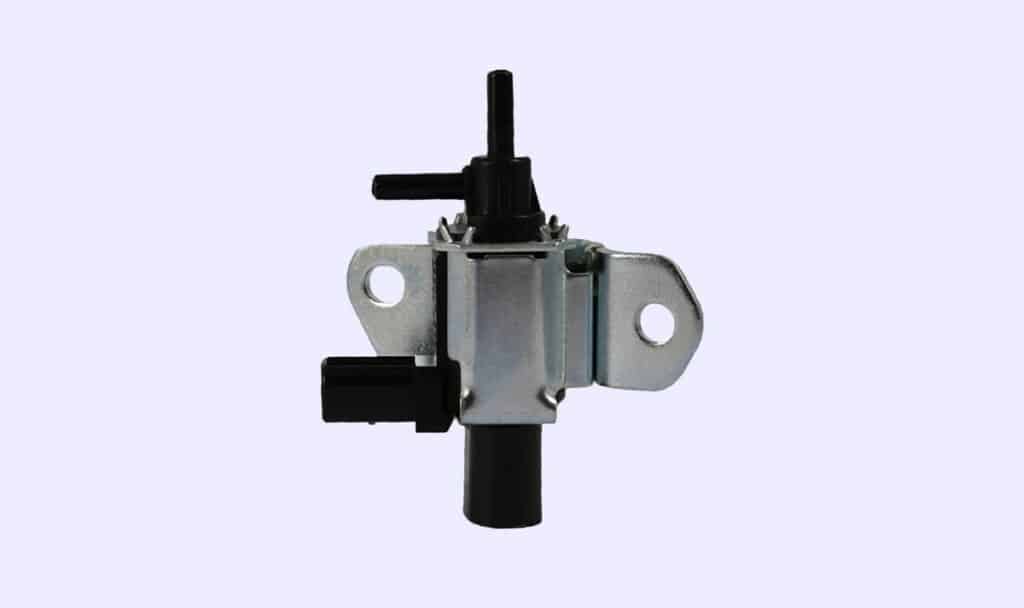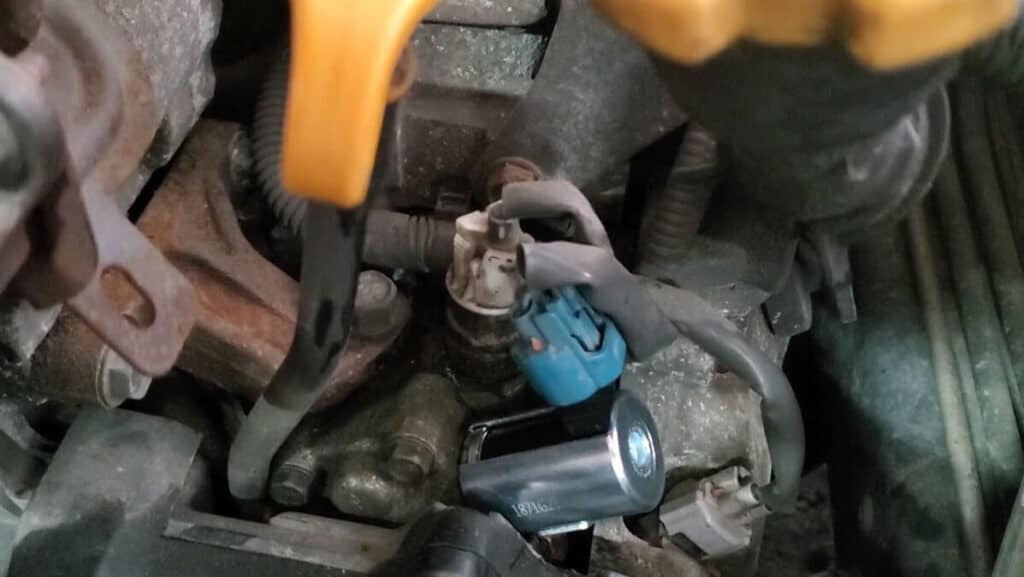What is an Intake Control Valve Solenoid?
The intake control valve solenoid is an electronic component that controls the flow of air into the engine’s intake manifold.
How Much Will it Cost to Replace an Intake Control Valve Solenoid in Canada?
The cost to replace an intake control valve solenoid in Canada can range from $100 to $300 CAD, depending on the make and model of the vehicle, as well as the location and labour rates of the repair shop. The labour time can range from 0.5 to 1.5 hours.

What are the Symptoms of a Faulty Intake Control Valve Solenoid?
Symptoms of a faulty intake control valve solenoid can include:
1. Poor engine performance: The engine may struggle with acceleration, have reduced power, or experience stalling.
2. Rough idle: The engine may idle unevenly, causing vibrations or shuddering.
3. Check engine light: The check engine light may illuminate on the dashboard, indicating an issue with the solenoid or related components.
4. Decreased fuel efficiency: A faulty intake control valve solenoid can lead to inefficient fuel consumption, resulting in reduced gas mileage.
5. Difficulty starting the engine: A malfunctioning solenoid can cause problems with starting the engine, particularly in cold weather conditions.
6. Emission problems: Increased emissions may occur due to improper air-fuel mixture control, potentially causing the vehicle to fail an emissions test.
How Long Does an Intake Control Valve Solenoid Last?
An intake control valve solenoid can last for many years, but its lifespan can vary depending on driving habits, environmental conditions, and overall maintenance of the vehicle.
How Does an Intake Control Valve Solenoid Become Defective?
An intake control valve solenoid can become defective due to several factors:
1. Wear and tear: Over time, the solenoid’s internal components can wear down, leading to reduced functionality or failure.
2. Electrical issues: Wiring problems, corrosion, or damaged connectors can disrupt the electrical current, preventing the solenoid from functioning properly.
3. Dirt and debris: Contaminants can accumulate in the solenoid, leading to blockages or damage to its components.
4. Manufacturing defects: In some cases, a solenoid may be faulty from the factory, leading to early failure.
5. Heat damage: Prolonged exposure to high temperatures in the engine bay can cause the solenoid to overheat and fail.
How Can a Faulty Intake Control Valve Solenoid Affect Other Systems in the Car?
• Reduced engine performance: A faulty solenoid can negatively impact power, acceleration, and fuel economy.
• Increased emissions: Malfunctioning solenoids can contribute to higher emissions, potentially causing the vehicle to fail emissions tests.
• Check engine light: A faulty solenoid may trigger the check engine light on your dashboard.
• Stalling and rough idling: A malfunctioning solenoid can cause stalling and rough idling issues.
• Additional wear and tear: Driving with a faulty solenoid can lead to increased wear and tear on other engine components.
Is it Safe to Drive with a Faulty Intake Control Valve Solenoid?
Driving with a faulty intake control valve solenoid is not recommended, as it can lead to a variety of issues that may compromise the safety and performance of your vehicle. A malfunctioning solenoid can negatively impact engine performance, resulting in reduced power, acceleration, and fuel economy. This can make it more difficult to maintain appropriate speeds, particularly on highways or when merging into traffic, increasing the risk of accidents.
In addition, a faulty intake control valve solenoid can contribute to higher emissions, potentially causing your vehicle to fail emissions tests and harming the environment. The check engine light may illuminate on your dashboard, indicating an issue that requires attention. Driving with a faulty solenoid can also cause stalling, rough idling, and additional wear and tear on other engine components. To avoid these problems and ensure safe driving, it is best to have a malfunctioning intake control valve solenoid diagnosed and repaired as soon as possible.
How Can I Make My Intake Control Valve Solenoid Last Longer?
• Regularly change the air filter
• Use high-quality fuel
• Keep the intake system clean and free of debris
• Practice good driving habits, such as avoiding hard accelerations

Conclusion
The intake control valve solenoid is an important component of the engine’s intake system. If you experience symptoms of a faulty solenoid, it is recommended to have it replaced as soon as possible to prevent further damage to the engine. Regular maintenance and good driving habits can help prolong the lifespan of the solenoid.
Next Steps
Book Your Intake Control Valve Solenoid Replacement Service
The service most frequently booked by those who read this article is Intake Control Valve Solenoid Replacement. Uchanics’ expert technicians make the process even more convenient by bringing the service right to your doorstep. We perform this job at your home or office, covering over 40 cities in Ontario, including Toronto, Mississauga, Brampton, Oshawa, Ajax, Scarborough, and more. Our commitment to excellence has earned us more than 700 glowing 5-star reviews. Choose Uchanics for your Intake Control Valve Solenoid Replacement and experience unparalleled convenience and top-quality service.
